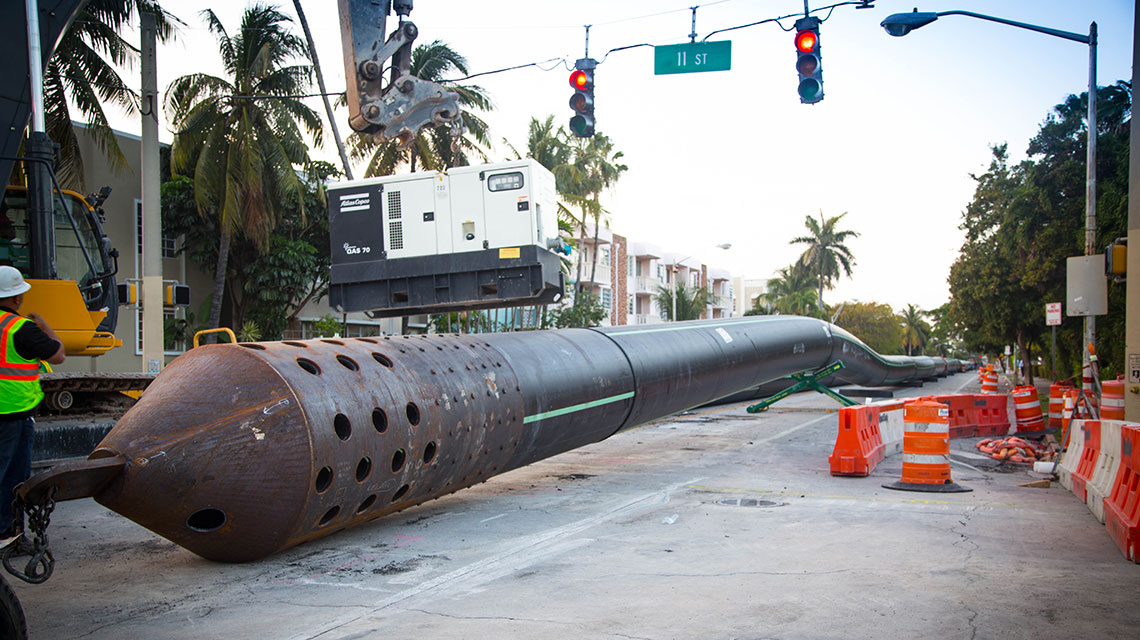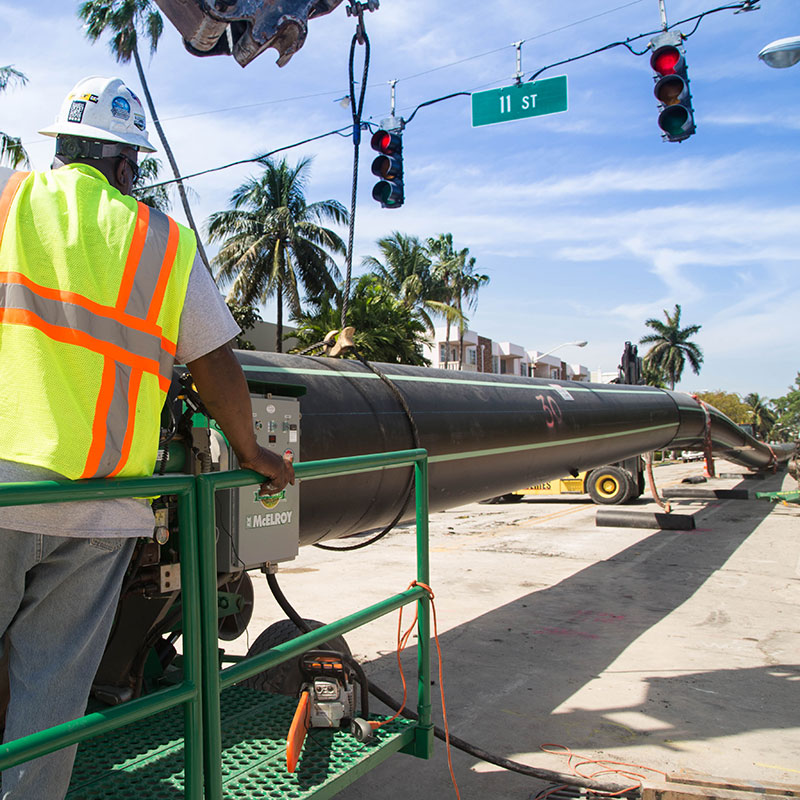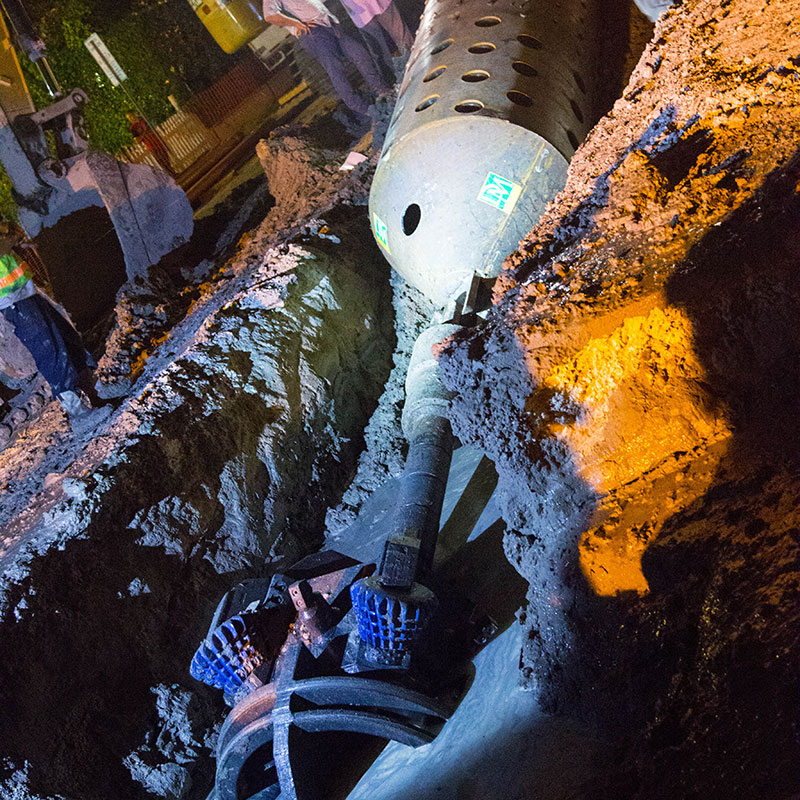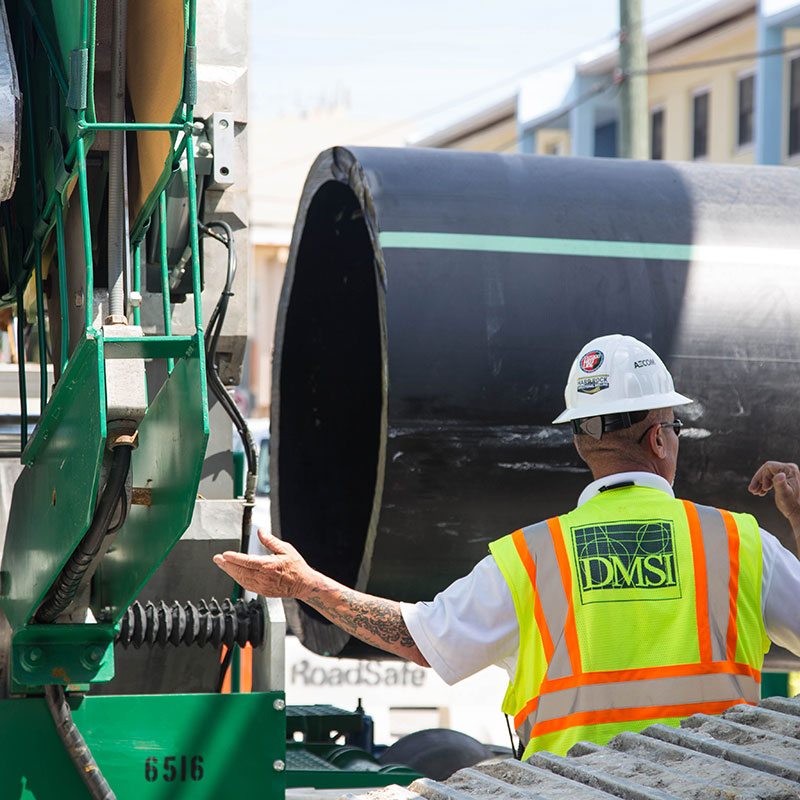
In 2013, the City of Miami Beach conducted a condition assessment on the existing 54-inch sanitary sewage force main pipe conveying sewage through the city of Miami Beach to the county wastewater treatment plant in Virginia Key. They discovered evidence that after years of satisfactory service, the sole pre-stressed concrete cylinder pipe (PCCP) sanitary main serving the City was deteriorated and potentially at risk of failure due to “Hydrogen embrittlement.” Failure of this force main, which is the sole means of wastewater conveyance, would be catastrophic in impact. It would potentially discharge millions of gallons of raw sewage in a residential area of one of the most popular tourist destinations in the world.
With concerns about pipe reliability and the potentially consequential and devastating economic impacts that could result from a structural failure, the City determined the construction of a new redundant force main was a high priority. The City selected a designbuild delivery method. The intention was to accelerate the effort, solicit innovation, and mitigate construction risks associated with a project mandating a trenchless method of installation. The project was not without several challenges. First, the geological makeup of the force main site, typical of south Florida, presented an obstacle. A layer of sand, shell, coarse sedimentary rock, over a layer of clay and sand. Direct replacement of the sanitary force main was not a viable option as this was the City’s primary sanitary sewer and could not be taken out of service to construct a new line. In-place replacement (open cut) would have been extremely expensive and disruptive to the community livingand working along the heavily trafficked, congested corridor.

Record Length HDD Pipeline Installation
The line was slated to run underneath Euclid Avenue and Washington Avenue from Commerce Street to 11th Street. The project, managed by the city’s Public Works Department, was awarded to David Mancini & Sons, Inc. (DMSI) as general contractor. DMSI retained Brian Dorwart of Brierley Associates to design the pipe, provided by ISCO Industries. It was a world record, 3,000 foot long and a 1,200 foot long installation of 54-inch diameter HDPE pipe using horizontal directional drilling (HDD) methods.
Previously, the City’s experience with HDD was limited to smaller diameters (< 30-inch diameter) and shorter drill lengths. (2200-2300 feet). In this case, the plan involved 3,300 feet of 54- inch DR 17 HDPE weighing approximately 225 pounds per linear foot. The City of Miami Beach had never attempted a directional drill on this scale. A drill like this is rare in the entire world. The placement of approximately 750,000 pounds of HDPE required creativity, experience, and teamwork.

ISCO: Top-notch Industry Experience
DMSI brought in Hardrock Directional and Spartan Directional, LLC to complete two pulls of the HDPE underground. “Spartan’s involvement was to provide all necessary man power and equipment to successfully complete these drills,” explained Boyd Simon, P.E., Manager at Spartan, “This project had the potential to advance HDD methods like they’d never been propelled before. We had the combined experience to make it happen.”
Spartan brought in Barry Nalling as supervisor on the project. With more than 35 years of experience in the HDD industry, he had completed projects all over the United States as well as Thailand, Africa, Mexico, Spain, and Venezuela.

Overcoming the Challenges
Another challenge for the project was working with very limited space. “This type of drill takes plenty of large equipment,” Simon explained. “Having to work on a two lane road under power lines was challenging.” Spartan brought in a Vermeer Million Pound Rig (D1000x900), mud pumps (American Auger P-750 & Tulsa Rig Iron TT-660), cleaning systems (American Auger MDC 1000 & Tulsa Rig Iron MCS 1000), a drill pipe (6-5/8 full hole, double shoulder), and hole openers (Horizontal Tech Jumbo Viper Rockreamers (30”, 42”, 54”, 66”, & 72”)).
The pull required the crew to open a six-foot hole for 3,000 feet in order to pull the 54-inch pipe. The final set up for the drill was put in place the night of March 15th, 2016. As the sun came up the next morning, the pull had started. It was slow at first, picking up speed by late afternoon. Another challenge was stopping to do a fuse on the two 1,500+ lengths of pipe. Field technician Andre Joiner from ISCO Industries worked with the crew to line up the pipe ends in a McElroy MegaMc 2065.
It was also tricky managing traffic around the site, both vehicle and foot traffic. With such a big work area, crews were diligent about keeping people at a safe distance.
The pull was slow, but successful, ending on March 16th, 2016. It took ingenuity and innovation to master apull that long.
SUBSCRIBE TO ISCO UPDATES
ISCO Updates
[gravityform id="21" title="true"]
